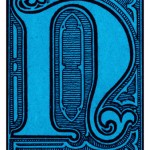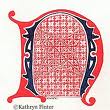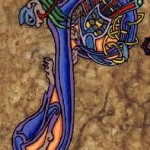PRACTICAL APPLICATIONS

We’ve arrived at part 3 of my 3-part series on Charlotte Mason’s method. I’ve discussed Charlotte Mason’s philosophical starting point in Part 1 and the building blocks of her approach in Part 2. In this last post, I’ll discuss some of the practical applications of her philosophy. What do you teach? How do you teach it?
In a blog post format I could never write about every subject as they would be taught, so I’m limiting my descriptions to some of Charlotte Mason’s most distinctive applications. Need more info? My favorite resources for answering the “how” questions of homeschooling in the Charlotte Mason tradition are Real Learning by Elizabeth Foss and Catherine Levison’s how-to manuals. But, as I mentioned in my first post, sometimes a simple snapshot is just what we’re looking for!
 Narration: Narration is the simple act of retelling what has been read, heard, or seen. A child might narrate what she has read or heard in literature or history, or something she has seen on a nature walk or during a picture study.
Narration: Narration is the simple act of retelling what has been read, heard, or seen. A child might narrate what she has read or heard in literature or history, or something she has seen on a nature walk or during a picture study.
Narration is a cross-disciplinary method of helping a child to:
-
pay attention to what she is learning,
- process and retain that information,
- filter out irrelevant information,
- pay attention to significant detail, and
- assimilate the ideas she has heard or experienced.
Through the process of narration, a child demonstrates real knowledge about something. If she is able to narrate with force and clarity, then she really knows something about the subject. As homeschool parents, narration can help us assess what our children really comprehend. Narration is a much better indicator of comprehension than completed worksheets.
 Living Books: Living books have real literary power. They are written by inspired and imaginative authors. Children enjoy living books, because they appeal to their hearts and emotions — not just their heads. Living books are written with lively and beautiful language. Children and adults alike can remember what they’ve read or heard in a living book.
Living Books: Living books have real literary power. They are written by inspired and imaginative authors. Children enjoy living books, because they appeal to their hearts and emotions — not just their heads. Living books are written with lively and beautiful language. Children and adults alike can remember what they’ve read or heard in a living book.
Educational textbooks are not living because they present facts in a wooden, dead style. This doesn’t mean we can never use a textbook, but we should be aware of their limitations. Furthermore, we shouldn’t allow a child’s tastes to dictate book selections: A child may love living books, but he may also like “twaddle”.
 Century Books: The Century Book is a binder or bound book that holds the child’s drawings, narrations, or other recordings about historical events or persons. In the Charlotte Mason classroom students wouldn’t begin keeping a Century Book until the 5th grade (about age 10), but many families begin simple books at earlier ages, or they keep family century books.
Century Books: The Century Book is a binder or bound book that holds the child’s drawings, narrations, or other recordings about historical events or persons. In the Charlotte Mason classroom students wouldn’t begin keeping a Century Book until the 5th grade (about age 10), but many families begin simple books at earlier ages, or they keep family century books.
The Century Book is kept in chronological order, even when the child isn’t studying history chronologically. Beyond that, there’s no right way to keep a century book. Some people have a binder with one century per page, with the child entering small sketches or notations about things learned in her readings in literature, history, art appreciation, science, etc.
Some people have a more flexible format. I plan to help my daughter Claire make a bound book for her century book pages this year, as she is learning about book binding and marbleizing paper. The goal is to get into the habit of recording events and people in the Century Book so that the child gets a sense of the grandeur of history. She will begin to make connections between people and events.
Catherine Levison has an excellent chapter on Century Books in her book More Charlotte Mason Education. Simply Charlotte Mason offers a free downloadable template for the Century Book.
 Nature Study: Most homeschoolers are familiar with Charlotte Mason’s approach to nature walks. We like Mason’s emphasis on field study, especially in the early years.
Nature Study: Most homeschoolers are familiar with Charlotte Mason’s approach to nature walks. We like Mason’s emphasis on field study, especially in the early years.
She insisted that children explore nature with little interference from adults. The parent has field guides in order to provide information as needed, but the goal is not to lead a guided lecture on some specific aspect of the natural world. (This doesn’t mean the child hasn’t read books about plants, animals, etc., but the nature walks should be as free as possible from lecturing or adult direction.)
Mason’s approach was to take the children on a nature walk one afternoon a week, allowing them to delight in the natural world and its creatures. The children collect things from their walks and record drawings or narrations in nature journals.
 Picture Study: In the Charlotte Mason tradition, art appreciation doesn’t require becoming an expert
Picture Study: In the Charlotte Mason tradition, art appreciation doesn’t require becoming an expert
on the various schools of art; it is about acquiring a “reverent knowledge” of great art.
We first read the children a brief biography about the artist, then we present a copy of one of the artist’s paintings to the children. In our house, we pass around one copy of the prints, but ideally each child would have his own copy to hold.
We allow the children plenty of time to study the painting so they get a feel for the basic aspect of the painting and also its details. We can ask them to close their eyes to see if they can see the painting still. If they can’t, they study the painting a little longer.
We then ask the children to respond to what they have seen and experienced. We display the painting for a week, then move on to another painting by the same artist. We stay with one artist for 6 to 8 weeks before moving on to a new artist. In this way, the child comes to know the artist’s works intimately.
I hope this brief overview of Charlotte Mason’s philosophy and method has helped you get a quick grasp of the essentials. Happy learning!